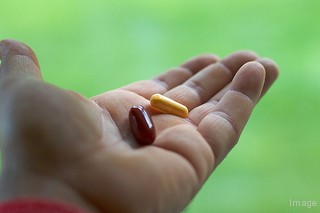Unlike high blood pressure (hypertension), low blood pressure (hypotension) carries much lower risks, however, it can still be dangerous in certain circumstances. When your blood pressure is low it means that your blood is not being pumped around your body with the force required to deliver enough oxygen to all of the relevant organics and cells.
One of the most common symptoms is that when a person stands up they can get dizzy. People who stand for long periods of time and then faint usually do so due to a blood pressure drop. Other symptoms of hypotension are : feeling dizzy, faint, lightheaded, lightheadedness, unsteadiness, lack of concentration, nausea (feeling sick), weakness, blurred vision, palpitations (a rapid, and/or irregular heartbeat), pale, confusion, clammy, fatigue, cold skin, depression or anxiety, thirst, sleepiness, confusion, black, tarry stools, tiredness, general weakness.
There are a few tips mentioned in this article on how to increase blood pressure.
Most doctors will not treat low blood pressure unless it is causing problems such as causing a person to fall over with no obvious reason. There is a medication (Orvaten, Proamatine, Midodrine, Fludrocortisone, Angiotensin-converting enzyme (ACE inhibitors), Angiotensin receptor blockers, Calcium-channel blockers, Diuretics (water tablets), Beta-blockers) that people can be prescribed in order to raise blood pressure, but it is rarely used as doctors tend to give the following advice on how to increase blood pressure:
- Do not strain when you go the toilet, as the body naturally puts more blood flow in the bowel area, as doing so can make you feel faint.
- Start to add a little more salt to your diet, and increase it over a number of weeks. Salt helps to retain water in your blood which increases blood pressure.
- Try an avoid drinks that contain alcohol as this help to reduce blood pressure, the opposite of what you should be doing.
- If you catch a virus such as the flu then drink plenty of water.
- During hot weather drink a lot of liquid, even if you are not thirsty.
- Exercise helps to strengthen the heart muscles and improve blood flow. You only need to start by walking 10 minutes a day, and build up to 30 over a few weeks.
- Do not lift anything heavy, especially if you are out shopping. Always use a cart, and load the car slowly.
- When sitting, keep moving your legs to make sure the blood is still flowing.
- Before standing, move to the edge of the seat and push yourself up slowly.
- If you have been lying down, such as when you wake up, sit up in the bed for a few minutes before standing.
- Do not use hot showers and baths as this will cause you to sweat and lose body moisture, therefore your blood pressure will drop.
- If you ever feel dizzy in the bath or shower then buy a water-proof chair to sit on.
- Learn to eat smaller meals, as the larger the meal, the more blood will be pumped around the stomach area to help digest it. This is why some people will feel dizzy after eating a large meal.
- Your doctor may advise you to wear compression stockings to lessen the amount of blood in your legs, and this in turn increases the blood pressure in the upper body.
If you follow some of these tips on how to increase blood pressure, you may not even need to see a doctor, as controlling it yourself is relatively easy. You can buy blood pressure monitor online (choose brands like Omron, CVS, Homedics, Advocate, Ozeri, LifeSource, Adscope, SantaMedical, Panasonic) for around $25 these days.
